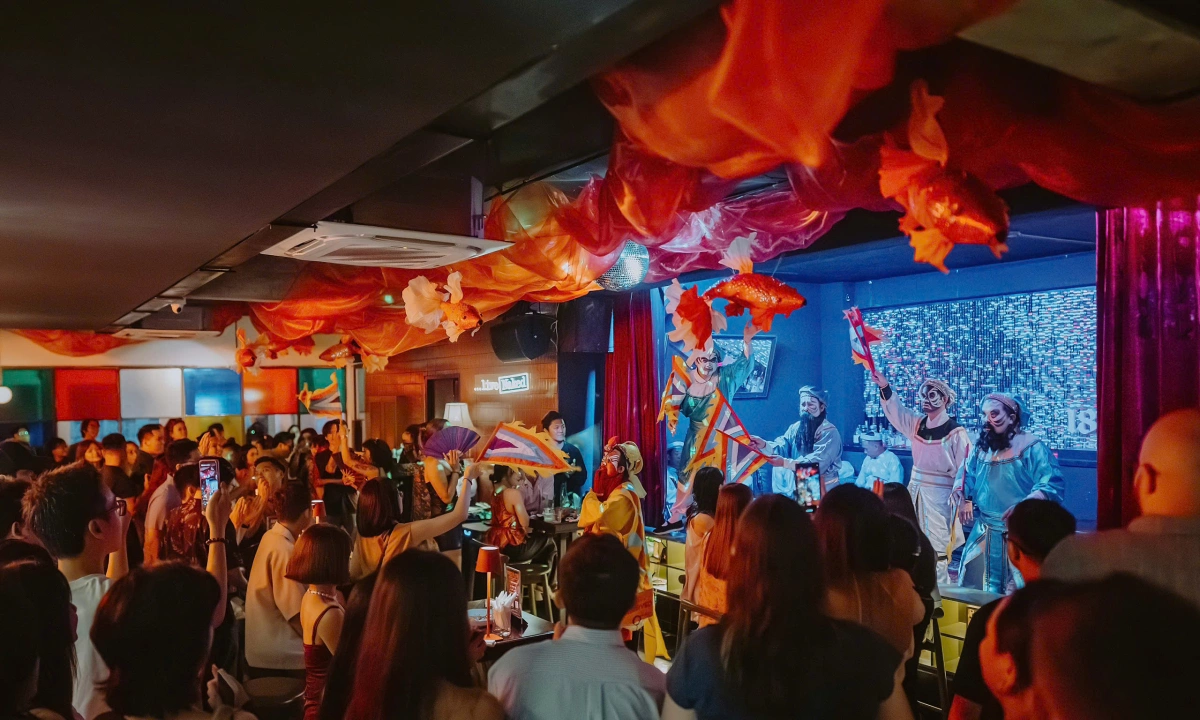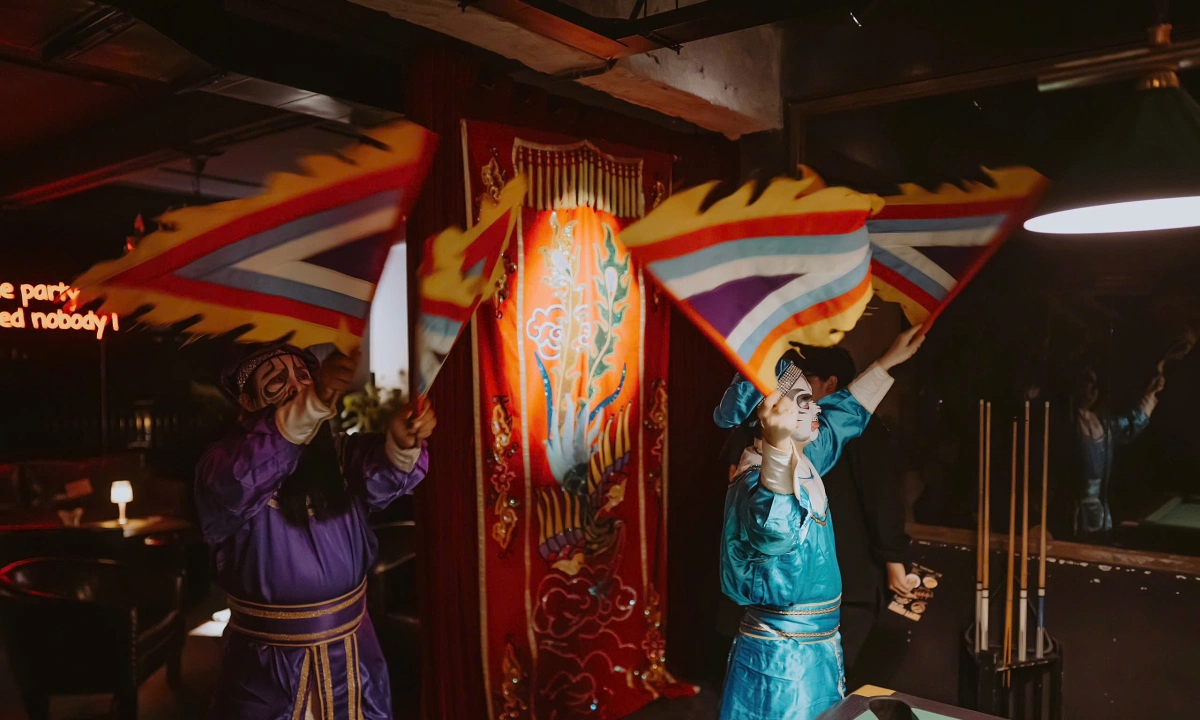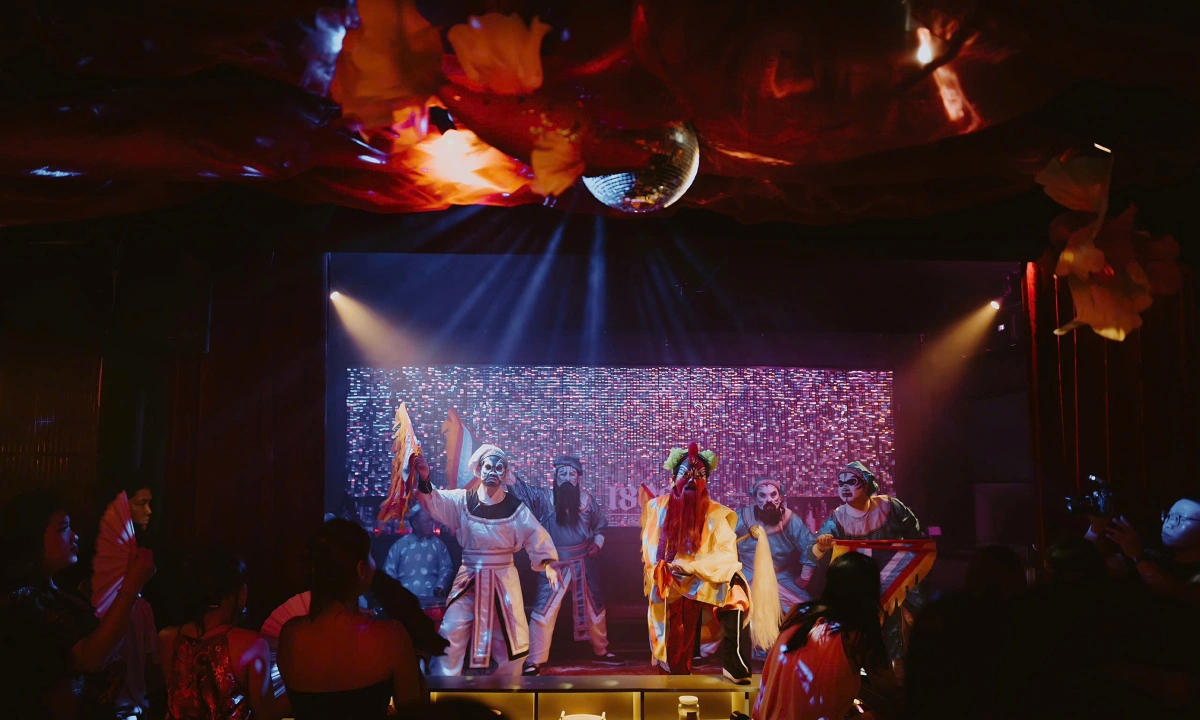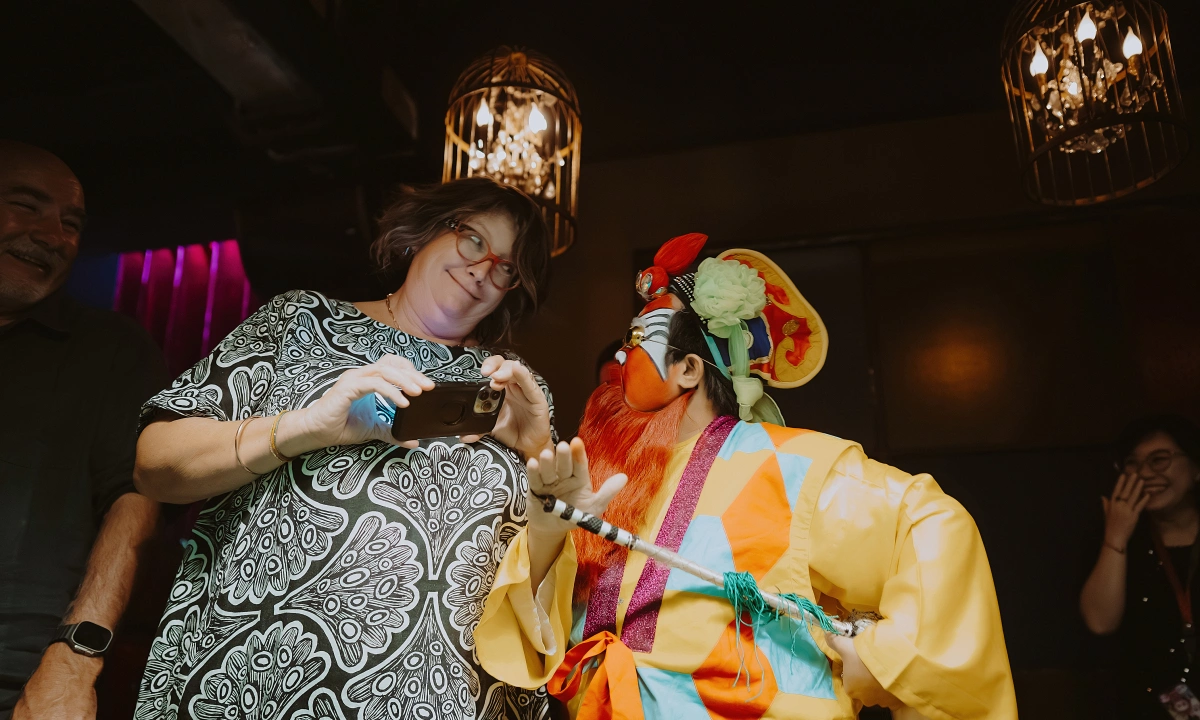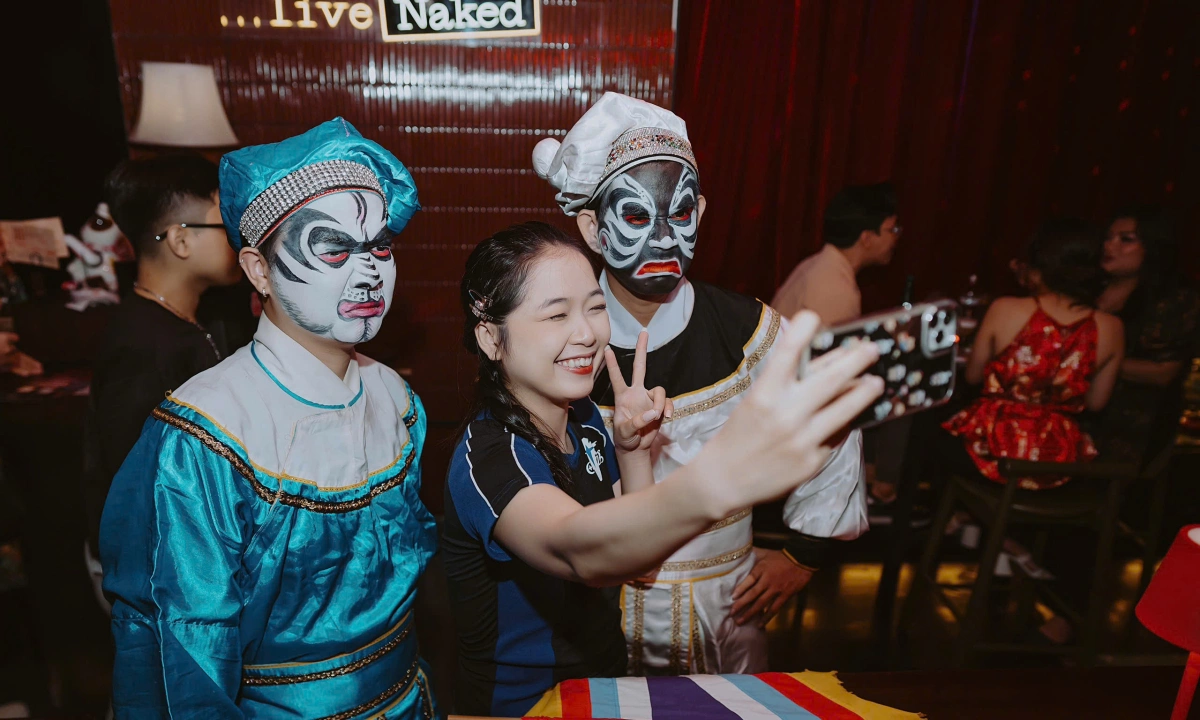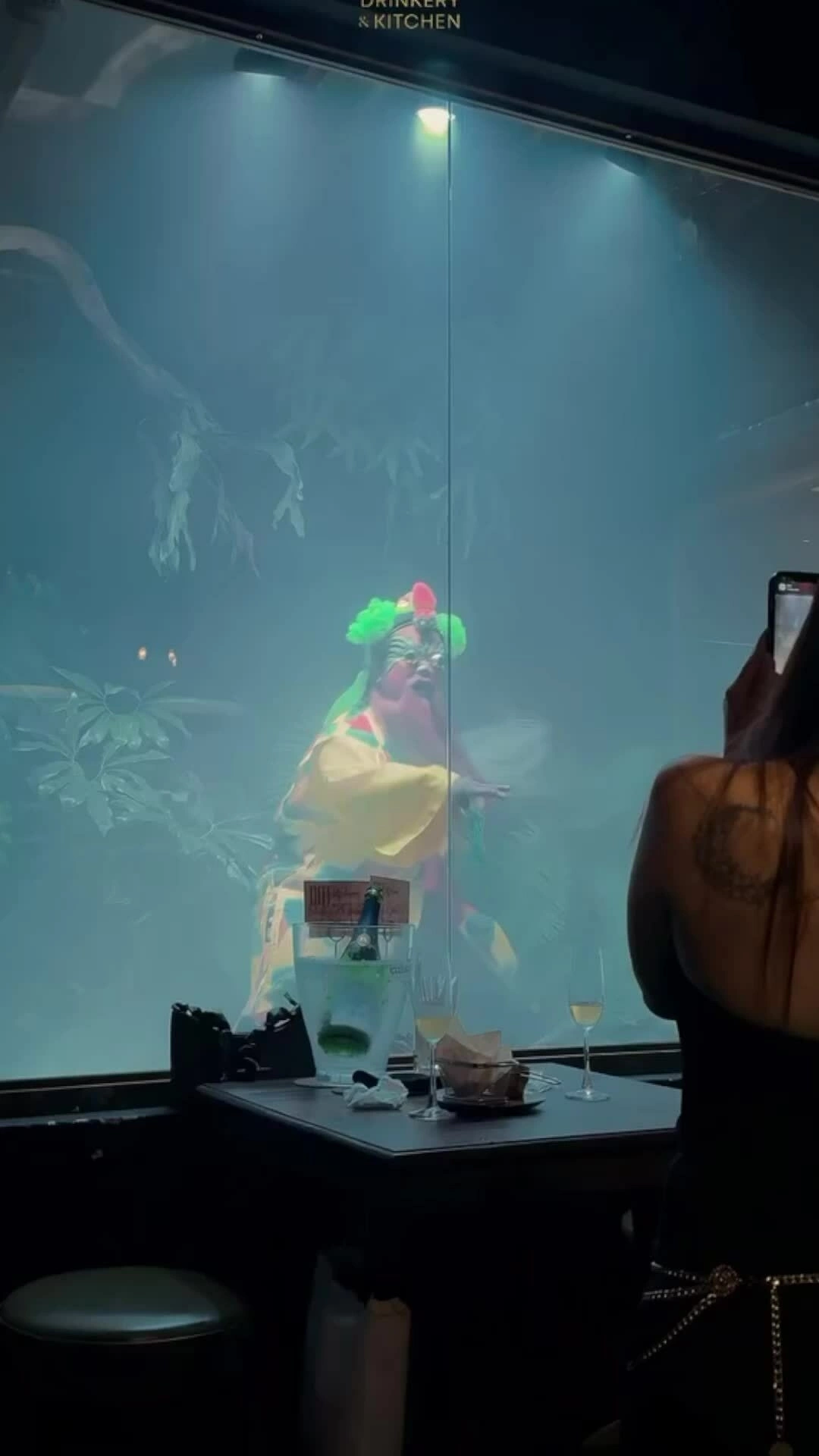Hat boi or tuong is a Vietnamese theatrical art form, typically performed in venues like village halls, theaters, or during traditional festivals. Recently, this art form has made its way into Dot Bar, located on the third floor of 75 Hai Ba Trung Street, District 1.
The bar reinvents its atmosphere by designing the space around folk cultural themes and introducing hat boi performances as part of the entertainment.
The first hat boi stage was re-created in the bar in late August, attracting many local and international visitors.
During the performance night, the entire bar was decorated with hat boi elements, using stage props like embroidered screens.
Le Ngoc Minh, co-founder of Dot Bar, shared that the bar has been open since the beginning of the year, with a focus on integrating Vietnamese culture into the space, entertainment, and even food and drink offerings.
“People usually assume that bars can’t be associated with traditional culture, but we found a way to make it accessible for young people and international tourists to experience Vietnamese culture from a new perspective,” Minh said, noting that the founding team spent a year researching and shaping the bar's style.
The idea for the hat boi bar was sparked during one of Minh's visits to the Ho Chi Minh City Hat Boi Theater in District 5. He observed that hat boi relies on body language and combining traditional instruments.
“With plays that have fewer dialogues, the audience doesn’t need to understand everything being said. They can just watch and enjoy the music to grasp the story,” Minh said.
After finalizing the concept, the bar collaborated with the Ho Chi Minh City Hat Boi Theater and the non-profit cultural organization Hieu Van Ngu to bring hat boi performances to the bar.
Do Hoang Tuan, a performer from the Ho Chi Minh City Hat Boi Theater, said that despite his 15 years in the profession, this was his first time performing on a stage in a bar.
He took on the role of a villainous character in a play. Before each performance, Tuan spends around two hours preparing his makeup and costume.
According to Tuan, this role involves many magical scenes and graceful choreography, keeping the audience engaged.
“Bringing hat boi into a bar is a fresh and exciting approach. I hope more people will come to appreciate and love this Vietnamese art form,” Tuan said.
The bar representative noted that the hat boi scripts and performance times are adjusted to capture the audience’s attention without overwhelming them. A typical play, which usually lasts about 90 minutes, is shortened to 15-20 minutes for the bar performances, with two shows per night to accommodate late arrivals.
“One-third of our guests are international visitors. If we chose plays with too many dialogues or made them too long, it would be difficult for them to follow,” Minh said.
Robyn Balter (C), an Australian tourist, stumbled upon the bar through social media during her trip to Ho Chi Minh City in August. She was pleasantly surprised and felt lucky to visit on a night when hat boi was being performed.
“I’m so glad I had the chance to learn about Vietnamese culture in such a fun and interesting way,” she said.
After the performance, the actors would mingle with the guests, allowing them to take photos.
The bar shared that the hat boi nights have generated positive buzz, with many visitors asking about future performances. The bar’s customer base has grown by about 30% since introducing the performances.
"The theater was fully booked in October," Minh said, adding that the next performance is scheduled for early November.
The bar also sets up a space for customers to participate in interactive games.
The owner shared that most customers stay until the end of the performance, mingling with the actors past midnight. In the future, the bar will continue its hat boi schedule, with two different performances each night to encourage guests to stay longer.
These shows are free of charge.
In addition to hat boi, the venue also hosts other traditional Vietnamese cultural activities, such as lion dance performances during the Mid-Autumn Festival and tributes to the ao dai - Vietnamese national dress. On weekends, all bar staff wear traditional ao dai.
“We are also planning to introduce dry puppetry and water puppetry to the bar,” Minh said.
The atmosphere at Dot Bar during a hat boi performance in August. Video courtesy of Dot Bar






